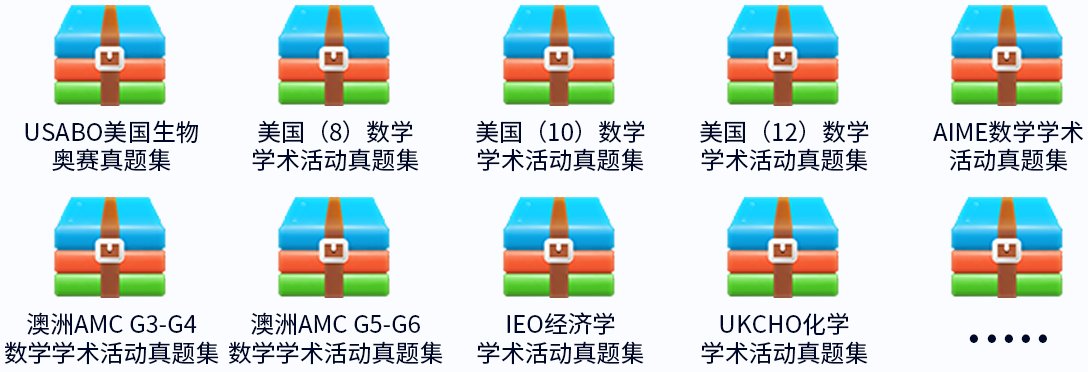JHU约翰霍普金斯大学更新
2025-2026申请季补充文书题目!
JHU 2025-2026申请季
补充文书题目
在约翰霍普金斯大学150周年校庆之际,其新题目紧扣校庆主题,围绕“引领发现的关键第一步”展开,要求申请者分享一个塑造自己的“重要第一次”经历!
🔽 补充文书题目 🔽 Over the past 150 years, every monumental discovery at Hopkins has started with a first step: The first draft by a Pulitzer Prize-winning author. A prototype that led to a life-changing medical invention. The first pitch that launched a new startup venture. As we commemorate the university’s sesquicentennial—150 years since its founding—we continue to celebrate first steps just as much as final achievements. Tell us about an important first in your life—big or small—that has shaped you (350-word limit).
🔽 译文(仅供参考)🔽
在霍普金斯大学过去150年的历史中,每个里程碑式的发现都始于一个起点:普利策奖得主作家的初稿手稿,引发革命性医疗发明的原型装置,催生初创企业的第一版商业计划书。值此建校150周年之际,我们既颂扬最终成就,也同样珍视那些初始的探索。请分享一个塑造您人生的重要起点(无论大小),字数限350词以内。
与往年相比,今年的题目更为具体,紧扣“第一次”的经历。不过,这篇文书的核心并非你克服了何种困难,其真正想捕捉的,是那个促使你“开始”的决定性瞬间,或某个深深触动你的时刻。
图源:JHU官网
JHU在官网列出了他们的评估维度,分别是学术品格、影响力与主动性以及与JHU的契合度。
除学术品格外,JHU在其余两项审核维度中均指出,他们将通过主文书和补充文书来判断申请者与学校的契合度。因此,文书是向招生官展示自我的重要媒介——即使未曾谋面,也能通过文字让他们了解你的特质、兴趣方向及相关经历。文书在申请材料中具有举足轻重的作用。

图源:JHU官网
那么,如何写出一篇出色的文书?JHU官网已发布了2029届6篇优秀文书范例,同学们不妨仔细研读,分析这6篇文书的亮点所在~
JHU优秀文书&点评
Balancing Life; A Life of Balance
By Jade c., ’29
The concept of balance guides me through life. At heart I am a figure skater. Since early childhood I’ve learned how to balance on and off the ice rink; to glide though skating routines and busy schedules. While I’m skating, time moves differently. I put my soul into each moment. I morph into the embodiment of my emotion and determination. I practice until it is perfect. I pass into a different state of mind, where I’m able to focus fully. I devote hours, and yet it feels as if no time is passing. I bring this pattern of dedication to all of the commitments in my life, and use my sense of balance to handle it all.
I keep moving, on and off the ice, from one thing to the next, because balanced doesn’t mean stagnant. In figure skating, and in life, movement helps keep me balanced. I’ve been raised entirely alone by my single mom, no custody time with my father. We live in an 1860’s log cabin with a lawn to mow, and feral rescue cats. We spend every July in a cottage in Canada helping my grandmother, and I help clean the AirBnB in our basement before every stay. It is important I keep gliding through everything in a timely manner, since it’s just the two of us, with lots of responsibilities, and no one else to pick up slack. From my mom I’ve learned early how to be resourceful, self-reliant, and to manage time effectively, including downtime. Sometimes that’s a challenge. Sometimes I start to feel off balance. Like when I’m in Boston for the Eastern regional synchronized skating competition, having to learn lines for my lead in the school play, and studying for AP classes. But my mom is always there if I need help strategizing. So when life accelerates, I take a deep breath. Even if the speed feels ominous, just like in skating, immersing myself feels liberating. It is all the more rewarding when my work is completed and I get to reflect on everything I’ve accomplished.
When I’m interested in something new to balance I look to my community. I am always the first to offer assistance at my school’s numerous volunteer opportunities. I regularly enlist in trips to a Rescue Mission, and have over 3 times the community service hours required to graduate. I also find activities through connections outside school. Like the Endangered Species Theater Project teen led production I was in last spring. On my own initiative, one of my passions is filmmaking. I plan to major in film studies. I enjoy the medium because it is the closest an audience can get to a story. I thrive in long editing sessions, writing marathons and as my own actor in solo projects. Every film project I create is another flex of my balancing skills.
Yes I’m a regionally qualifying synchronized figure skater, but I’m also a fourth degree black belt in Taekwondo; I’m three term president of my school’s student government association; I’ve been lead in the school play two years in a row; I’m an AP Scholar, a guitarist, and a pianist. I’m a leader, a fighter, a vegetarian, an actor, an athlete, a friend, a musician, a cinematographer, and a straight A student. For my endeavors to go smoothly I’ve honed my sense of balance, and dedicated myself: to the arts, knowledge, and community.
I’ve sculpted myself into a balance beam holding multiple high level skills at once. I love learning, improving, and making an impact in every section of my life. I feel proud of the work I am completing in such diverse ventures. I am always happy as a fulcrum, the balance point of a lever system, I am the “Renaissance man.” I love to succeed in each pursuit, to accomplish many things in a variety of areas, and I am always searching for more.
Admissions Committee Comments
Jade uses their essay to highlight the importance of balance in their approach to life. From figure skating to volunteering to theater, they weave together the importance of seemingly divergent interests to highlight how a balanced approach has built skills and perspectives that have shaped their worldview. At Hopkins, students will be confronted with a wide range of experiences, opportunities, and perspectives. This essay creates confidence in our committee that once a student, Jade will have no difficulty continuing to pursue a balanced approach that allows them to explore all that Hopkins has to offer.
译文:
Jade在文章中强调了其生活态度中平衡的重要性。从花样滑冰到志愿服务再到戏剧表演,他们将看似迥异的兴趣爱好串联起来,彰显出平衡发展如何培养塑造其世界观的能力与视角。在霍普金斯大学,学生将面临丰富多彩的经历、机遇与观点。这篇文章让我们招生委员会确信,一旦成为霍普金斯的一员,杰德必能继续秉持平衡发展的理念,充分探索我校提供的一切资源。
Be the Salt of the Earth
By maria g., ’29
“No le pongas demasiada sal!” My mom, anticipating a bitter taste from the soup, alarmed me. Yet curious like a five-year-old, I felt it was my mission to discover the secrets behind the little white container in front of me. Standing still, making noise at a shake, laid the salt. Deciding to empty half the recipient, my mom and I laughed the second I tasted our alphabet soup.
Composed of primarily sodium chloride, salt is a staple for food and culture. At the same time, the element is an equal symbol for health, preservation, and connection. Seen time again in history, salt was a compensation for Roman Empire’s soldiers, a source of currency for ancient China, and an exchange in the Gulf Coast from the Olmec people. Globally, a little of it goes the long way.
Ironically, for the entirety of my early adolescence, I underestimated the value of salt in the human body. How could such a small grain be worth immense value? It appeared like an exaggeration. Despite my assumption, fainting in the presence of heat conversely transformed this mindset. Then, I was not surprised to know I battled with low blood pressure. To prevent injuries, I was advised to intake balanced meals. Most importantly, moving from one state to another forced me to keep track of possible imbalance in my body at the end of my junior year.
With an opposing view of the country, I was intrigued at smoky undertones of sea salt in brown rice, at a piece of boiled egg with table salt, or at a pinch of pink salt in a fresh avocado. Unable to eat foods with high sodium, I grew appreciation at the appearance of soul meals in new places. Mere glimpses at dishes fueled my taste examinations. While exchanging interactions with a diverse school population throughout lunch time, I met teenagers and teachers with a history of resilience, migration, and adaptation. Fascinated by the mural of cultures, each little grain of salt in my vision embodied human connection, presenting roots and traditions with pride. My new communities were an open door to discover distinct salt flavor profiles.
Throughout my personal progress of adaptation with moving, I discovered my love for the range of policies, economies, and customs bounded in the world. Enamored by the study of international relations, my pursuit for educating on the states of societies, financial positions, dearth of rights, and extent of access to resources arrived naturally. In a similar way that I enhance my knowledge of salt’s contributions, I am committed for my expatiating my passion towards diplomacy. Exhibiting my devotion for the protection of interests and sustaining peace, the epiphany of helping not just my home countries in the US and Mexico but vulnerable groups at developing countries became my mission.
At the gaze of a welcoming sun, I practice addressing and collaborating changes particularly towards the rights of children and teenagers in my community. Implementing the first UNICEF Club at my school and district, I advocate for young children that are underrepresented, mistreated, yet are equally deserving of education and a bright tomorrow. By promoting the organization’s mission, I aspire to transform beyond fixed generational chains of knowledge. Similarly, my engagement with my state’s Civic Education Coalition, enlarges my infatuation of governance, civic education, and establishing a democratic future. Through my continuous experience with domestic relationships, I prepare for connections and transformations at a larger global scale.
As a person with a close connection to salt, its presence revolutionized my life purpose. Now, every grain of salt is an insight of diversity in our world and human interactions. Appreciating the intricate connection between individuals and nations, salt awakened my passion for revealing paths with solutions. In fact, I consider salt’s impact on Earth as an embodiment of motivation for building systematic change. Salt is truly a symbol of our globe’s shared essence.
Admissions Committee Comments
In her essay, Maria uses salt as a driver to examine her growing awareness of communities and perspectives different from her own. This emerging cognizance serves as a starting point for her jump into areas of impact that focus on service, diplomacy, and collaboration with others. Collaboration and conversation across diverse perspectives is an important way that students at Hopkins learn and become engaged members of a global society. Maria uses her essay to effectively show how she is prepared to participate in that very type of discourse and action-oriented college experience that Hopkins provides.
译文:
Maria在文章中借"盐"为引,探讨了自身对不同社群与多元视角的觉醒历程。这种日益增长的认知成为她投身服务、外交及跨领域合作等实践领域的起点。在霍普金斯大学,学生正是通过多元观点的碰撞交流与协作,成长为国际社会的积极参与者。Maria通过文章有力展现了她已经准备好融入霍普金斯所提供的这种注重多元对话与实践的大学体验。
Where Math Collides With Art
By Anthony m., ’29
Pop quiz: A bird shoots through the crisp morning air of New York City, dodging skyscrapers at a speed of thirty kilometers per hour. The sun breaks through the horizon, blinding the bird in both eyes. The bird manages to catch its reflection in the shining glass of the Empire State Building—but by that time, it’s too late. How do we use velocity, angles, distance, and force to find the point at which the glass shatters?
For me, math is more than just numbers. It’s a mode of visualizing movement in action, the synthesis of my imagination and the physical world. When I’m problem-solving, I’m not just generating a string of numbers on paper. I’m picturing the spiral of a rollercoaster, the friction of a waterslide, and the curvature of an asteroid’s impending collision with Earth.
In high school, when precalculus was taught as a series of step-by-step instructions, it felt like the vivid and colorful world I had come to love was being broadcast in black and white. I saw this reflected in the growing disinterest of my classmates, who saw math as a monotonous chore rather than a universal language with boundless explanatory and creative power. I had to step in. I had to show people what I saw.
This inspired me to begin writing creative math questions for my peers. My parametric equations are not simple problems with one-step calculations– they are cinematic universes that jolt audiences with excitement. They invite others to embrace mathematics as a practice of external—and even internal—discovery that was missing in my school.
When I present my famous “bird crashing into the window” problem students enthusiastically gather around the whiteboard to uncover its mysteries. I watch their impassioned discussions unfold with a sense of satisfaction as each drawing and scribble brings them closer to the truth. Witnessing their pride as they finally arrive at the answer reminds me of why I teach.
I’ve since honed question-design into an art, creating math tests and exercises for Teachers Pay Teachers so that teachers around the world can give my imaginative questions to their students. I hope that students not only learn the concepts I’m teaching– but also critical thinking and reasoning that provides new ways to solve challenges in their lives.
I have also used the medium of math beyond problem sets and assessments. As captain of the Math Olympiad, I use it to transform confused faces into laughter and excitement, to test my teammates’ courage and strengthen team bonds. When I tutor Mu Alpha Theta or teach in Wall Street Lions, it is a language of empathy and connection to connect with students with interests outside of STEM. And in CivicSpark—the non-profit I co-founded to help students gain agency through civic engagement—I deploy the logic and reasoning of math without the numbers. Through a curriculum of imaginative puzzles, I empowered students in schools across Southern California to reach out to their representatives to ignite real change.
In this way, I have used math as a brush to paint a canvas that extends beyond the visual to what matters most—infusing life with greater meaning and heart. It is this creativity that compels me to pursue Applied Mathematics. There is no greater or more fulfilling challenge than the application of mathematics to real-life problems. However I hope to take this application a step further: If every calculation is a story, what does it mean for us to become storytellers? And how can this intellectual artistry transform the world?
As for the bird that caught its reflection in the office window–perhaps it isn’t about the force of the collision, but what happens after. The way the shards of glass multiply a single reflection into thousands of new perspectives. The way a barrier opens to reveal spaces that were previously hidden. And the infinite possibilities of what happens next.
Admissions Committee Comments
Pursuing knowledge and connecting resulting discoveries to the wider world is one of the foundational pillars of the Hopkins mission. In his essay, Anthony explores the beginning of his interest in mathematics, diving into the many classrooms and personal experiences that created and strengthened it. He takes this interest, and the essay, a step further by showcasing the ways that he translated this interest into real world impact. By connecting his interest in math to work he’s done through teaching, a non-profit, and a school club, Anthony demonstrates an ability to impart his passions and knowledge through a number of different avenues. These skillsets and mindsets will allow him to take advantage of the opportunities at Hopkins and show strong alignment with the University as a whole.
译文:
在霍普金斯大学的办学使命中,追求知识并将学术发现与社会实践相结合是核心支柱之一。Anthony在文章中追溯了自己数学兴趣的起源,通过丰富的课堂经历与个人体验,层层剖析这份热爱的形成与深化。他更进一步展现了如何将理论兴趣转化为现实影响——通过教学活动、非营利组织工作及校园社团实践,Anthony展现出通过多元路径传播知识与激情的卓越能力。这种知行合一的品质将使他充分把握霍普金斯提供的各种机遇,彰显其与大学教育理念的高度契合。
Building a Universe
By Shotaro O., ’29
Just outlining the coastlines took a month. On the solid, 22-inch by 30-inch sheet of white paper I was working on, I couldn’t just press the “undo” button if my highlighter happened to slip. I had spent two months creating a rough draft, and an additional month transferring that onto the final copy with a pencil. I then outlined that with a pen, which I was now going over with a highlighter. Messing up at this point meant losing four months of hard work. The stakes were high, but I was enjoying the process. I was already thinking about other details I could expand upon next. A steampunk society experiencing rapid technological advancements, I’d decided, would be the setting of this fantasy world. I imagined the technologies I could introduce in this setting. I thought about the economic and cultural indications these technologies would have on civilizations in this world. Meanwhile I continued to carefully move my highlighter.
“Worldbuilding” is a process of creating a fictional universe of your own; developing anything from the geography and climate of a continent to the annual holidays of a specific culture. The easiest way to visualize the process is to think about works by some fantasy authors, like J.R.R. Tolkien, or game developers. Though I am neither, this hobby is an important part of who I am; it reflects my interests, my curiosity, and my growth.
One reason I love worldbuilding is because of the sheer amount of questions I can ask. Research is critical to the process. The questions I’ve recently asked involved history (I looked at how historical nomadic empires rose to power), geology (I studied plate tectonics for a more realistic map), primatology (I researched about Great ape language to explore possibilities of interspecies communication), and computer science (I wanted to know whether computers could be invented by civilizations without electricity). The questions that worldbuilding forces me to ask open my eyes to new subjects I didn’t even know existed, and this in turn enables me to work with more sophisticated worldbuilding ideas.
Worldbuilding also allows me to show my own personality within my fantasy world. The amount of detail into the world’s history is reflective of my love for the subject. My passion for abstract strategy board games (like chess and checkers) has motivated me to develop a similar board game for my world. The extensive government systems of my republics and empires reflect my strong understanding of the legal system, gained through my participation in the school Mock Trial.
Two months later, standing over my finished map, I immediately noticed some flaws. I’d drawn the continents a bit too small, leaving an awkward blob of blank space on the top left of the map. On the bottom, the map legend’s design was noticeably underwhelming. Overall, things could definitely be better.
And yet, gazing over my creation what I most prominently felt was pride. This moment was perhaps my favorite part about worldbuilding—taking a step back and seeing what I managed to create from scratch. In 6 months, my map came to contain three continents, 100+ islands, 50+ countries, and 60+ major cities, along with road networks, major rivers, and mountain ranges. I’d also developed various sophisticated histories, cultures, and technologies accompanying the individual societies. Worldbuilding shows you what’s in your mind: stuff that amazes even yourself.
Even when the map is finished, the worldbuilding journey continues on. I’m still researching. I’m still reflecting my other passions onto my creations. My next map may identify earthquake hotspots, and it definitely will have a better organized legend. My next civilization may be built by apes, and it will surely have developed mechanical computers. Fusing knowledge, experience and imagination, the possibilities of worldbuilding are truly endless. As long as I continue to grow and learn, my world continues growing with me. I find that very exciting.
Admissions Committee Comments
Hopkins is a place that encourages and facilitates interdisciplinary learning and exploration. Through his interest in worldbuilding, Shotaro is able to highlight skills and perspectives that will allow him to seamlessly engage in that type of interconnected study. In building his worlds, Shotaro has explored topics in history, geology, and other subjects all with the goal of creating a cohesive, well-developed, and realistic world. His essay provides ample evidence that allows our committee to imagine the ways he may similarly and effectively combine different fields of study while a student at Hopkins.
译文:
霍普金斯大学始终鼓励并促进跨学科学习与探索。Shotaro通过构建虚拟世界的兴趣,展现出能从容参与这种互联式学习的能力与视角。在创世过程中,他综合运用历史学、地质学等多学科知识,旨在打造连贯完整且真实可信的世界观。这篇论文使我们招生委员会确信,Shotaro在霍普金斯求学期间,必将以同样有效的方式融汇不同学术领域。
A Splash of Color
By Emily O., ’29
I stare into my bathroom mirror as I remove the mask. For the first time, I will attend high school showing my full face. I need to be beautiful, just like the girls on my TikTok feed. I examine each video, searching for the common thread. A hot pink blush gleams on each girl’s cheek. Despite the stark contrast between my pale Irish skin spattered with freckles and that of the sun-kissed influencers, I race to Target to search for the infamous Revlon Insta-Blush which comes in stick form, making it foolproof. Or, so I thought.
On the first day of school, I optimistically swipe the stick across my face, waiting for instant beautification. But, my embarrassingly pink cheeks redden as they attract a different type of attention. I quickly banish the blush stick to the back of my makeup drawer. In need of a confidence boost, I vow to add color into my life instead of my face.
An opportunity presents itself near the end of freshman year as I sit in World History class with my friends Hannah and Julia. Suddenly, they thrust their iPads in my face. They smirk, informing me that “Glenbard West is looking for its next weather reporter.” I join them in laughter but steal a second look at the email. My eyes betray me. Both catch my second glance.
“Oh my gosh, Emily, I dare you!” Hannah screeches. I shrug, click the sign-up link and hastily complete the form. Later, I am invited to submit an audition video. I scoff and close the email, certain I’d quickly become a social pariah. Yet, this could be my chance to add a splash of color, to take a risk and attempt something new. I grab my umbrella as a prop, hit record and recite the script. A week later, an email entitled, CONGRATULATIONS WEATHERWOMAN!, arrives. What have I gotten myself into?!
Suddenly, it’s time to compose my first report . . . to enter the eye of the storm. Conscious that every word will be broadcast to all of my peers, I keep it straightforward, simply presenting the forecast. Boring. I know something is missing. So, I create a catchy sign-off, “Keep it Cool in the Castle West” which references our school’s castle-like logo.
On recording day, I stare into my bathroom mirror once again. My eyes drift toward a single tube of coral blush I had been given two years prior. Its soft, sunset orange hue in stark contrast to that TikTok trending hot pink. I slowly dab the Glossier Cloud Paint blush onto my cheeks. It gives my pale skin a natural glow, one that emulates my happiness. My confidence shines as I record my first segment.
Later, when the broadcast projects into my classroom, my nerves take over. I bury myself into my iPad, trying to disappear. After class, I venture into the hallway, eyes glued to the floor.
“Great job with the weather!” someone yells. Another waves. I shoot upright, scanning from one smiling face to another. As I record more and more broadcasts, even people I hadn’t known before begin to say “hi” to me across campus. I’d always been one with a small, tight circle of good friends, but unexpectedly, my social network broadens as my campus “celebrity” grows. As I forge connections with new peers, my confidence builds. I expand my role within the broadcast and my school. I no longer recite the bare minimum but rather, report on sporting events and dare to write my own jokes. Contributing to our school spirit in this small way makes me proud. By trying new things and breaking the cage of conformity, I’ve also learned to love myself and my differences from the girls on social media. I wear my coral blush with pride for the freshman girl in Target. She finally learned how to be herself.
上下滑动 查看原文
Admissions Committee Comments
Emily’s essay uses a variety of personal experiences to highlight how she takes risks, explores new passions, and learns about what excites and inspires her. From trying a new makeup trend to joining her school’s weather station, she shows how the journey toward understanding oneself and finding meaningful experiences is often one that requires taking chances. Hopkins values the process of discovery, both in and outside of the classroom, and Emily’s essay does an excellent job demonstrating the ways in which she has embarked upon that process. It’s clear that, at Hopkins, she would find ways to dive into a vibrant campus community and contribute in ways both old and new.
译文:
Emily在文章中通过多元的个人经历,展现了她勇于尝试新事物、探索未知热情并追寻自我激励源头的特质。无论是尝试新颖的美妆潮流,还是加入学校气象站,她都表明:认识自我与收获有意义经历的旅程往往需要冒险精神。霍普金斯大学重视课堂内外的探索过程,而Emily的论文出色地诠释了她如何践行这一理念。可以确信,在霍普金斯,她将积极融入充满活力的校园社群,并以传统与创新兼备的方式作出自己的贡献。
Conquering
By Faith W., ’29
I remember being surprised at how weak my arm felt, as if I was holding a dumbbell instead of a microphone. Standing in front of all of my high school classmates at our weekly Monday Meeting, I could feel my heartbeat in my ears as I studied the small silver holes in the head of the microphone and momentarily wished I was small enough to fit into one of them and disappear. I looked down at the short Women’s History month fact I had prepared and began to read. It wasn’t until I felt someone come up next to me and gently push the microphone closer to my face that I realized that no one could hear me. I finished a few seconds later and fought tears as I returned to my seat amid a smattering of polite applause.
I mostly felt embarrassed; I had failed at such a simple task and allowed my nerves to hijack my voice. For the rest of the meeting, I watched our Student Body President, a brilliant, charismatic senior make announcements and crack jokes with an apparent ease that I couldn’t fathom. I had so much respect and admiration for his public speaking skills– I wished I had the courage to be up there, self-assured and composed. As my embarrassment ebbed I felt another feeling boiling up in me; a sudden resolve. I wanted to get up there one day and try again.
Naturally a reserved person, adjusting to a new school freshman year had been difficult. I found a weird solace in hiding behind the masks we were still wearing at the time– covering most of my face made it easier to remain in my own little bubble, quietly observing others. Given my shyness, I was a bit surprised when a teacher encouraged me to run for Student Council. I surprised myself even more when I decided to run. The idea of being one of the student leaders who I so admired, up there leading the meetings, scared me, and yet it simultaneously drew me in like a magnet for reasons that I couldn’t have fully articulated at the time. It was precisely the fear that made me want to try– I wanted to prove to myself that I could conquer it.
This inescapable pull towards things that scare me has extended into every aspect of my life, from public speaking to basketball to academics. Aside from the responsibility I feel to myself, I often think about people less fortunate than I am; my cousins in Florida, family members in Jamaica, and girls just like me around the world who will never have access to an education. Many of them will never have the chance to take an AP science class, give a TEDx talk, or run for Student Council. I feel that I owe it to them, too, to take advantage of every opportunity, even the daunting ones. Getting out of my comfort zone is not just a personal obligation; it’s a privilege and a blessing.
Now, in front of my classmates as Student Body President, holding the microphone doesn’t trigger the waves of panic it once did. I no longer study the holes in the microphone; thanks to experience, I have gradually felt empowerment take the place of horror when I have the microphone in my hand. Recently, an underclassman told me that even though she loves being in Student Council, she would never run for President, because she could never get up there and speak like I do. She said it flippantly, like it was just a fact, but I saw so much of myself in her and immediately pushed back. She can. Because I did. Ultimately, that’s the best part of holding the microphone- being an example and encouraging those who I’ll eventually pass it on to, like so many others did for me.
Admissions Committee Comments
Faith’s essay introduces us to a challenge faced by many—a fear of public speaking. However, she is able to explore how that initial fear leads to a resolve to tackle the challenge head on. Through her subsequent growth, we can see how she cultivates a deeper understanding of her ability to effect change, capitalize on her opportunities, and inspire others. Students may face challenges in college, but Faith shows us how she’s able to persevere and use her experiences to develop herself into an impactful member of her community.
译文:
Faith的论文向我们展示了许多人共同面临的挑战——公众演讲恐惧。然而她成功阐释了这种最初的畏惧如何转化为直面困难的决心。通过其成长轨迹,我们看到她对自身能力的深刻认知:如何推动改变、把握机遇并激励他人。大学生活难免遇到挑战,但Faith展现出将逆境转化为动力、通过历练成长为社群中卓有贡献者的能力。
读到这里,2026Fall的同学们是否对文书框架有了新灵感?为助大家一臂之力,小林特地准备了哈佛大学2023-2024年的优秀文书及详细点评。这是一份很实用的参考,只需扫码即可免费获取!
扫码领取

仅展示部分
2023-24年哈佛大学
优秀文书范文&点评










